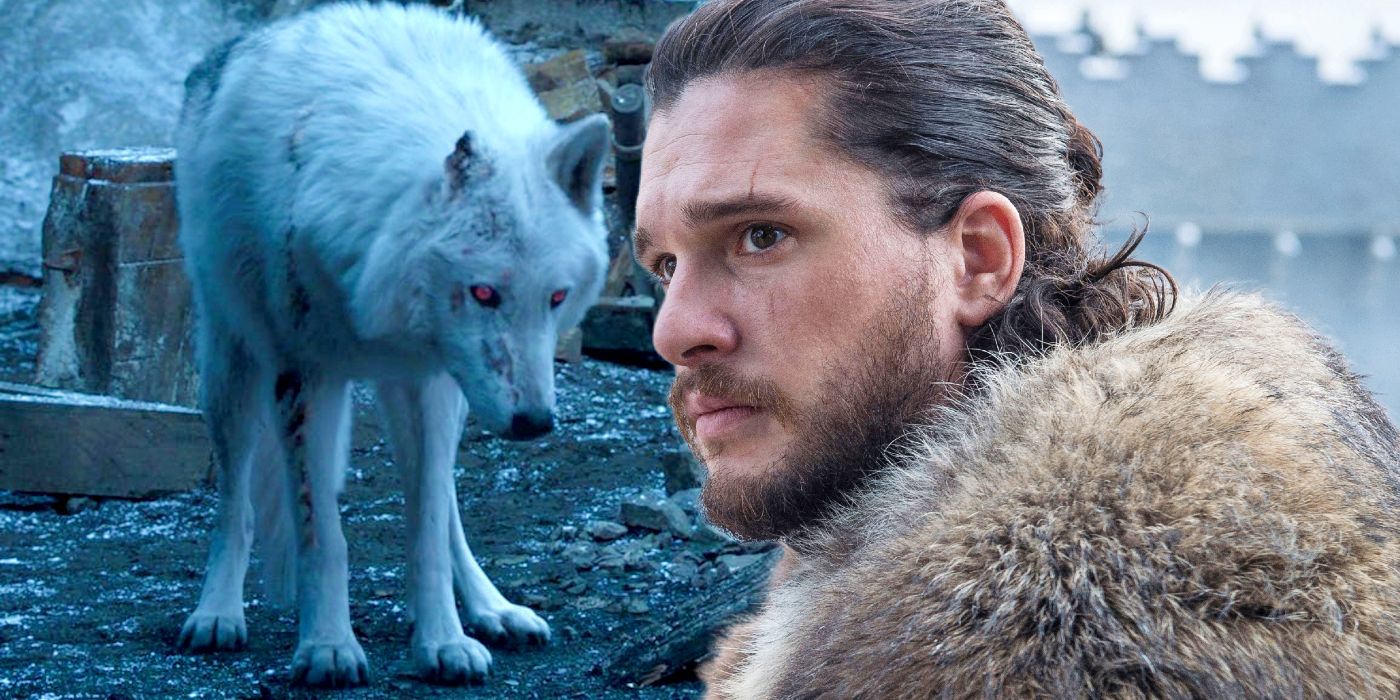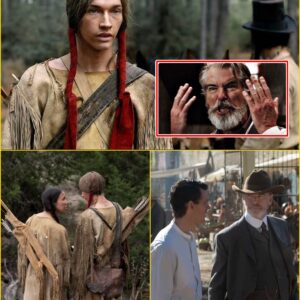The world of Game of Thrones, adapted from George R.R. Martin’s A Song of Ice and Fire book series, is renowned for its intricate storytelling, political intrigue, and fantastical elements. Among the many mythical creatures that populate the land of Westeros, the direwolves stand out as both symbolic and integral to the narrative, particularly for the Stark family. These majestic creatures, larger and more intelligent than their common wolf cousins, are the sigil of House Stark, representing the family’s resilience, loyalty, and deep connection to the North. While the series introduced six direwolves—each bonded to a Stark child—recent developments in the real world have brought a new twist to the direwolf legacy: the creation of genetically modified white direwolves inspired by the show. This article explores the role of direwolves in Game of Thrones, their symbolic significance, and the fascinating real-world revival of a white direwolf pair, Romulus and Remus, alongside their sibling Khaleesi, as of April 2025.
Direwolves in Game of Thrones: A Symbol of the Starks
 In the very first episode of Game of Thrones, “Winter Is Coming,” the Stark family encounters a rare sight: a dead direwolf mother and her six pups. Direwolves, described as near-mythical creatures in the south of Westeros, are massive canines—capable of growing as large as a small horse—with heightened intelligence and loyalty. In the North, where the Starks rule, direwolves are acknowledged as real but rarely seen, with rumors of their presence in the Wolfswood near Winterfell. The discovery of the pups is a pivotal moment, as Ned Stark allows each of his children to adopt one, seeing it as a sign. The litter consists of five gray-brown pups for the trueborn Stark children—Robb, Sansa, Arya, Bran, and Rickon—and a white albino runt, Ghost, for Jon Snow, Ned’s supposed bastard son.
In the very first episode of Game of Thrones, “Winter Is Coming,” the Stark family encounters a rare sight: a dead direwolf mother and her six pups. Direwolves, described as near-mythical creatures in the south of Westeros, are massive canines—capable of growing as large as a small horse—with heightened intelligence and loyalty. In the North, where the Starks rule, direwolves are acknowledged as real but rarely seen, with rumors of their presence in the Wolfswood near Winterfell. The discovery of the pups is a pivotal moment, as Ned Stark allows each of his children to adopt one, seeing it as a sign. The litter consists of five gray-brown pups for the trueborn Stark children—Robb, Sansa, Arya, Bran, and Rickon—and a white albino runt, Ghost, for Jon Snow, Ned’s supposed bastard son.
Each direwolf reflects the personality and fate of its Stark companion, serving as both protector and symbol. Grey Wind, Robb’s direwolf, embodies ferocity and loyalty, accompanying Robb into battle during the War of the Five Kings until both meet a tragic end at the Red Wedding. Lady, Sansa’s direwolf, mirrors Sansa’s initial innocence and is the first to die, executed on Cersei Lannister’s orders after an incident involving Arya’s direwolf, Nymeria. Nymeria, named after a warrior queen, reflects Arya’s fierce independence; after biting Prince Joffrey, Arya sets her free to avoid execution, and Nymeria later leads a pack of wolves in the Riverlands. Summer, Bran’s direwolf, is protective and loyal, sacrificing himself to save Bran from White Walkers. Shaggydog, Rickon’s direwolf, shares Rickon’s wild nature but is killed when Rickon is betrayed. Finally, Ghost, Jon Snow’s albino direwolf, symbolizes Jon’s outsider status with his white fur and red eyes, remaining a steadfast companion through Jon’s journey, from the Night’s Watch to his exile beyond the Wall.
 The direwolves are more than pets; they are deeply tied to the Stark family’s identity and the ancient magic of the North. Their presence in the series foreshadows significant events, such as the return of the White Walkers, and their fates often parallel those of their owners. However, as Game of Thrones progressed, the direwolves’ screen time diminished due to the logistical challenges of filming with real animals and the high cost of CGI. By the series’ end, only Ghost and Nymeria survive, with Ghost accompanying Jon beyond the Wall and Nymeria leading her pack in the wild.
The direwolves are more than pets; they are deeply tied to the Stark family’s identity and the ancient magic of the North. Their presence in the series foreshadows significant events, such as the return of the White Walkers, and their fates often parallel those of their owners. However, as Game of Thrones progressed, the direwolves’ screen time diminished due to the logistical challenges of filming with real animals and the high cost of CGI. By the series’ end, only Ghost and Nymeria survive, with Ghost accompanying Jon beyond the Wall and Nymeria leading her pack in the wild.
The White Direwolf: Ghost and the Symbolism of Albinism
Among the direwolves, Ghost stands out as the only albino, with white fur and red eyes—a stark contrast to his gray siblings. His appearance mirrors Jon Snow’s status as an outsider within the Stark family, as Jon is raised as Ned’s bastard, unaware of his true parentage as a Targaryen. Ghost’s name, chosen by Jon for his silent demeanor and pale coat, also foreshadows Jon’s death and resurrection in the series, as well as his ghostly existence between worlds—neither fully Stark nor Targaryen, neither fully of the North nor the South.
Ghost’s albinism is a rare trait among direwolves, as noted in the lore of Westeros. Albino direwolves are described as having white fur and red eyes, a combination that makes them both striking and otherworldly. In the show, Ghost’s role is significant but often understated due to production constraints. He saves Samwell Tarly from a wight, stands guard over Jon’s body after his betrayal by the Night’s Watch, and fights in the Battle of Winterfell, losing half an ear in the process. Fans were notably upset when Jon parted with Ghost in Season 8 without a proper goodbye, though a later scene showed Jon petting him before heading beyond the Wall.
The Real-World Revival: Romulus, Remus, and Khaleesi
While Ghost remains a fictional icon, the direwolf legacy has taken a surprising turn in the real world. On April 7, 2025, Colossal Biosciences, a genetic engineering company known as the “De-Extinction Company,” announced a groundbreaking achievement: the creation of three genetically modified gray wolves with the phenotype of the extinct dire wolf. Named Romulus, Remus, and Khaleesi (after Daenerys Targaryen from Game of Thrones), these wolves were engineered using DNA from a 13,000-year-old tooth and a 72,000-year-old skull, combined with 20 genetic edits to the gray wolf genome. Unlike the historical dire wolf (Canis dirus), which went extinct around 10,000 years ago and was not closely related to modern gray wolves, these new direwolves were designed to resemble their fictional counterparts from Game of Thrones.
Colossal Biosciences leaned heavily into the pop culture significance of their project. The company used CRISPR technology to give Romulus, Remus, and Khaleesi fluffy white fur, based on a new analysis suggesting that ancient dire wolves may have had snow-colored coats. This choice aligns with the appearance of Ghost, the albino direwolf, and taps into the mystique of white direwolves in the Game of Thrones universe. The wolves were even photographed on a replica of the Iron Throne, loaned by Game of Thrones fan and filmmaker Peter Jackson, further tying the project to the show’s legacy.
George R.R. Martin himself became involved, signing on as a cultural adviser and investor for Colossal Biosciences. Martin visited Romulus and Remus at their private preserve, certified by the American Humane Society, and remarked, “Many people view dire wolves as mythical creatures that only exist in a fantasy world, but in reality, they have a rich history of contributing to the American ecosystem.” However, the project has sparked debate. Some posts on X have criticized the initiative as a publicity stunt, arguing that these wolves are not true dire wolves but rather gray wolves genetically altered to mimic the fictional creatures from Game of Thrones. Critics point out that real dire wolves were smaller than their Westerosi counterparts and not closely related to modern wolves, making the project more of a homage to the show than a true de-extinction.
The White Direwolf Pair: Romulus and Remus
Romulus and Remus, the two male direwolves, have captured particular attention due to their striking white coats and their names, which evoke the mythological founders of Rome—a fitting choice for creatures meant to herald a new era. Alongside their sister Khaleesi, they represent a blend of science and fantasy, embodying the allure of the white direwolf archetype established by Ghost. While Ghost’s albinism in Game of Thrones was a natural trait, the white fur of Romulus and Remus was a deliberate choice by Colossal Biosciences, reflecting a desire to capture the ethereal quality of the show’s direwolves.
In Game of Thrones, white direwolves like Ghost are rare and symbolic, often associated with otherness and destiny. The real-world Romulus and Remus, though not albino (their eye color has not been specified in reports), carry a similar mystique. Their creation raises questions about the intersection of science and storytelling: can a genetically engineered animal truly embody the spirit of a fictional creature? For fans of Game of Thrones, the white direwolf pair offers a tangible connection to the show’s world, even if their existence is more symbolic than practical.
The Legacy of Direwolves: Fiction and Reality
The direwolves of Game of Thrones have left an indelible mark on popular culture, inspiring everything from fan art to real-world conservation efforts. The show’s use of real animals—Northern Inuit dogs for the pups in Season 1, and later real wolves like Quigley, who played an older Ghost—added authenticity to the direwolves, though the production faced challenges with filming and CGI. Sophie Turner, who played Sansa Stark, even adopted the dog that played Lady, highlighting the emotional bond between the actors and their on-screen companions.
In the real world, the popularity of Game of Thrones led to a surge in demand for wolf-like breeds such as Northern Inuits, Siberian Huskies, and Malamutes. However, this craze also resulted in increased abandonment rates, as some owners underestimated the challenges of caring for these high-energy, independent dogs. The creation of Romulus, Remus, and Khaleesi by Colossal Biosciences adds a new chapter to this legacy, blending science fiction with scientific innovation. While these white direwolves may not roam the wilds of Westeros, they embody the enduring fascination with the creatures that captured the hearts of millions.
Conclusion
The direwolves of Game of Thrones are more than fantastical beasts; they are a vital part of the Stark family’s identity, reflecting their struggles, triumphs, and connection to the North. Ghost, with his white fur and red eyes, remains a fan favorite, symbolizing Jon Snow’s journey and the mystique of the white direwolf. The real-world creation of Romulus, Remus, and Khaleesi in 2025 brings this mystique into reality, albeit through genetic engineering rather than natural evolution. While some may view the project as a publicity stunt, it undeniably bridges the gap between fiction and science, allowing fans to imagine a world where direwolves once again walk the Earth. As of April 9, 2025, the white direwolf pair stands as a testament to the enduring power of Game of Thrones—a story that continues to inspire, captivate, and push the boundaries of what’s possible, both on screen and off.





